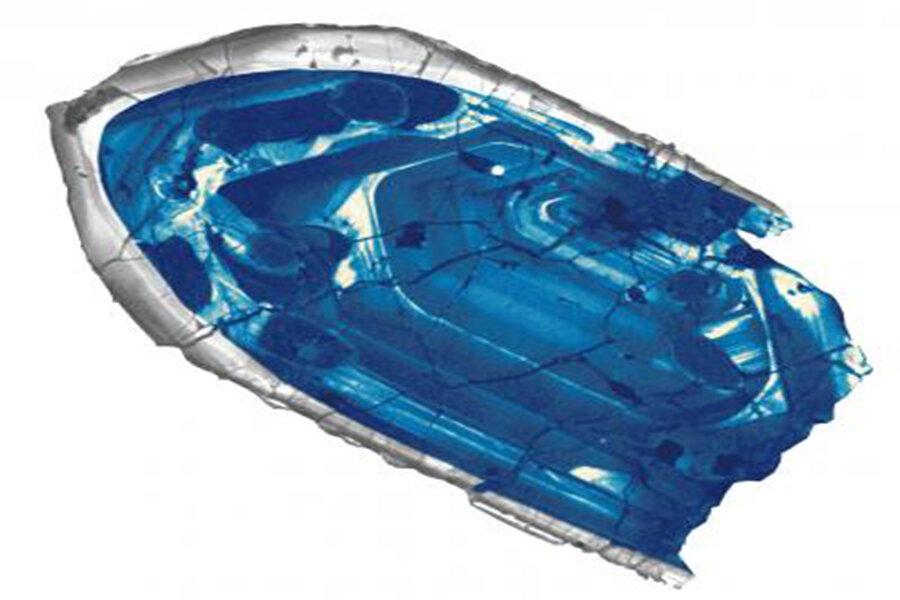What can a 4.4-billion-year-old bit of Earth's crust tell us about the origins of life?
Loading...
A suite of crystals that came into existence not long after the Earth's formation could shed light on how and when our planet became habitable.
Collected from a sheep ranch in Australia in 2001, these "oldest bits of crust" are up to 4.4 billion years old, according to a paper titled "Hadean age for a post-magma-ocean zircon confirmed by atom-probe tomography," published this week in the journal Nature Geoscience. By comparison, the Earth itself is thought to be 4.54 billion years old, plus or minus 20 million years.
The samples consist of a type of silicate mineral called zircon.
"Zircons are like small grains of sand solidified like sand dunes in a beach," John Valley, a professor of geoscience at the University of Wisconsin-Madison and lead author of the paper told the Monitor.
The standard procedure to determine age of crystals is through the process called uranium-lead geochronology. Over time, uranium steadily decays into lead. The amount of lead present therefore can be used to calculate the crystal's age, says Dr. Valley.
This is the method Valley and his team originally used to date the zircon samples in 2004, arriving at an age of 4.4 billion years for the oldest one. But other scientists raised concerns that the lead within the crystal may have moved, resulting in an incorrect age.
This recent study deploys a technique called atom-probe tomography. When combined with a technique called secondary ion-mass spectrometry, the researchers confirmed the sample's age.
The scientists examined individual atoms of lead in the sample and determined their mass. They found that lead atoms within the volume they were looking at had travelled such short distances that the age of the crystal was not compromised in the process, Valley says.
According to a press release from the University of Wisconsin-Madison, the researchers found that, the lead atoms were clustered together, like "raisins in a pudding," in Valley's words.
The group also measured oxygen isotope ratios in the zircon crystals that formed 4.3 billion years ago, a finding that firms up the idea of a "cool early earth," where temperatures were low enough for the formation of liquid water.
"The Earth was assembled from a lot of heterogeneous material from the solar system," Valley said.
The solar system is believed to be 4.568 billion years old, having formed out of a dust cloud whose particles coalesced into the sun and a disk of debris, which themselves consolidated into planets, moons, and asteroids and other celestial objects. Most scientists believe that, early on in our planet's history, an object about the size of Mars slammed into Earth, turning the planet's surface into an ocean of molten rock and ejecting material that would eventually form the moon.
These zircon samples indicate that the planet cooled quickly afterward. By 4.3 billion years ago, the planet was cool enough to allow liquid water, which subsequently allowed for the emergence of life. The findings confirm that the Earth's crust formed at least 4.4 billion years ago, just 160 million years after the formation of the Earth, said researchers.








